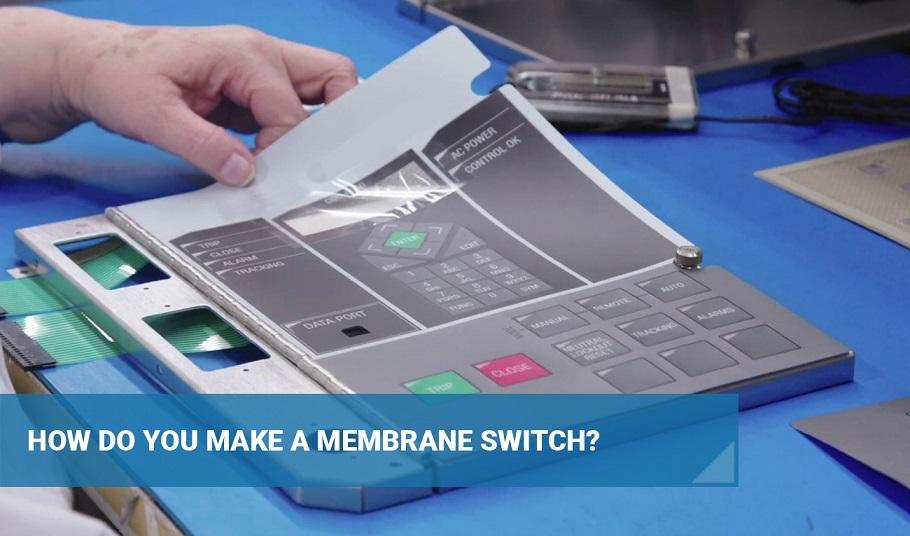Leading Benefits of Integrating a Membrane Switch Into Your Digital Equipment
Leading Benefits of Integrating a Membrane Switch Into Your Digital Equipment
Blog Article
Comprehending the Performance of Membrane Layer Changes for User User Interface Devices
The functionality of membrane switches represents a considerable development in user interface layout, integrating performance with aesthetic flexibility. As markets significantly prioritize individual experience, comprehending the nuances of membrane button innovation becomes necessary.
What Are Membrane Layer Buttons?
Membrane switches are cutting-edge interface gadgets that promote customer communication with electronic tools. These flexible elements contain several layers, consisting of a visuals overlay, spacer, and a printed circuit layer. The style permits a seamless combination into numerous electronic devices, improving both the aesthetic and useful elements of interface.
Membrane switches are commonly employed in a broad variety of applications, from house home appliances to commercial equipment and clinical gadgets. Their building and construction commonly features a slim profile, making them an ideal selection for portable layouts. The tactile responses supplied by these buttons can be crafted to meet details customer preferences, ensuring effective communication in between the customer and the tool.
Longevity is an additional significant benefit of membrane buttons, as they are resistant to dust, moisture, and chemicals, which boosts their life expectancy in requiring atmospheres. Additionally, these buttons can be tailored in terms of shape, dimension, and visuals design, permitting branding and user-specific functions. On the whole, membrane switches over stand for a functional service for enhancing customer experience in digital tools, integrating functionality with visual allure in an effective way.
How Membrane Switches Over Work
Operating on an uncomplicated concept, membrane layer changes utilize a split building and construction to register individual input efficiently. Each switch contains several layers, including a published circuit layer, a spacer layer, and a top graphic layer, which are created to interact flawlessly. When a user presses the leading layer, it compresses the spacer layer, bringing the conductive aspects of the circuit layer right into contact with each other.
This get in touch with creates a shut circuit, signaling the tool to perform a particular feature. The layout enables different configurations, including tactile feedback, which can boost the user experience by providing a physical feeling upon activation. The products used in membrane layer buttons frequently consist of adaptable substratums, such as polyester or polycarbonate, which make certain toughness and resilience against damage.

Key Advantages of Membrane Layer Switches

Another considerable benefit is their compactness. Membrane switches are slim and light-weight, which allows manufacturers to save space in their gadgets without compromising functionality. This attribute is specifically valuable in applications where weight and volume are important considerations.
Additionally, membrane layer switches are immune to dust, dampness, and chemicals, enhancing their durability. This durability prolongs their life expectancy and reduces hop over to these guys the need for constant substitutes, resulting in price savings in time.
In addition, the tactile responses supplied by membrane layer buttons can be optimized to improve customer communication. They can include features such as elevated switches or audible clicks, boosting use and customer experience.
Applications Throughout Industries
Interface tools utilizing membrane switches prevail in a wide array of sectors, showcasing their flexibility and functionality. Membrane Switch. In the medical market, membrane switches are essential to gadgets such as analysis tools and individual monitoring systems, where their durability and simplicity of cleaning are essential for preserving health criteria. In the auto sector, these buttons are employed in dashboard controls and infomercial systems, offering a weblink smooth and modern-day user interface for customers.
Moreover, the customer electronics industry gain from membrane switches in home appliances and portable devices, where small style and easy to use user interfaces improve user experience. Industrial applications also leverage membrane layer switches over for control board in machinery and automation systems, highlighting their effectiveness and resistance to extreme environments.
In the aerospace and defense markets, membrane layer switches are made use of in cockpit controls and devices, where reliability and efficiency under severe problems are extremely important. Additionally, the gaming industry significantly includes membrane layer buttons in controllers and arcade machines, adding to an interesting user experience. On the whole, the adaptability of membrane layer changes allows their widespread usage throughout countless fields, underscoring their importance in modern-day customer interface design.
Future Fads in Membrane Layer Change Modern Technology

Additionally, using sophisticated materials, such as polycarbonate and polyester films, is anticipated to climb, offering improved sturdiness and resistance to ecological stress factors. These products add to the general durability of membrane buttons, making them suitable for harsher industrial applications.
Furthermore, the incorporation of wise technology, consisting of IoT connection, will enable membrane switches to communicate with other devices and systems, facilitating a much more interactive user experience. This fad lines up with the growing need for clever gadgets across different sectors, from health care to consumer electronic devices.
Last but not least, modification options are prepared for to increase, enabling producers to develop bespoke remedies customized to specific user requirements and choices. These growths will position membrane layer switches as essential parts in the advancement of interface technology.
Final Thought
In final thought, membrane changes represent a critical innovation in user interface technology, providing a reliable and functional service for diverse electronic applications. As advancements in material scientific research and touch sensing innovations continue, the performance and applicability of membrane switches are expected to expand, strengthening their value in modern digital gadgets.
Report this page